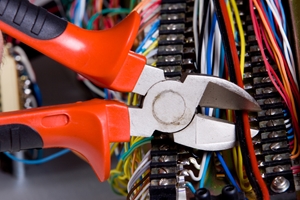Working with electrical systems raises a number of concerns, and for good reason. It’s not surprising that states from Queensland to Western Australia (WA) have implemented safety regulations for those at risk of experiencing electrocution.
World #Safety News: Australia : ETU backs live electrical work ban >> http://t.co/YdvByIjeqY #HSE #OHS
— SafetyLineLoneWorker (@SafetyLineLW) August 9, 2015
When professionals are testing or installing electrical equipment, they must be cognisant of the risks associated with their practices. In addition, it’s helpful to look at the data associated with electrical tasks.
Incidents in the workplace
In WA, the majority of electrical accidents occurred within ‘the wider community’, or to people who were not partaking in a job-related responsibility. Since 2003, 54 per cent of incidents involving electricity transpired outside of the workplace, while 46 per cent happened on the clock.
However, these figures do not account for the number of electrical incidents in proportion to other kinds of accidents. For example, Safe Work Australia’s Key Work Health and Safety Statistics, Australia, 2015 report noted that electrical contact accounted for less than 5 per cent of the total number of employment-related injuries or fatalities.
Don’t get shocked. Electrical safety from our mates @TradeHubAU #safety #trades #tradesman #australia http://t.co/LcLN8vbhMB
— Alltradescover (@alltradescover) May 5, 2015
To draw a comparison, nearly 35 per cent of workplace injuries and deaths were due to events involving vehicles. Still, this statistic could be due to the possibility that a greater number of workers are operating motor vehicles instead of installing, repairing or servicing electrical equipment.
Electrical risk mitigation strategies
Queensland released an electrical safety code of practice in 2013, detailing the methods employers and others in the workforce can employ to prevent electrical accidents. The first step in managing risks is to identify any hazards. A few of the most common dangers associated with electrical work are listed below:
- When a piece of equipment has been modified or manipulated in some way
- How employees are using electrical products
- The conditions associated with electrical equipment’s location
NECA has released the latest version of its Electrical Industry Guide to Workplace Safety http://t.co/CgfSCnstMy
— NECA Australia (@NECA_Australia) July 15, 2015
Some risks are more dangerous than others. To determine which ones require immediate attention, workers should ask several questions. For example, could directly touching a piece of electrical equipment cause a fatal accident or fire? How many people would be impacted by such an incident?
From there, professionals can introduce control measures. The same set of protocols that apply to managing one risk may be ineffective when implemented for another hazard. Workers must deduce whether eliminating, substituting or isolating the risk is most practical. Employing administrative and engineering control as well as the use of personal protective equipment are also valid risk reduction tactics.









 Reduce cooking oil costs while ensuring quality
Reduce cooking oil costs while ensuring quality Expert knowledge on CO2 monitoring
Expert knowledge on CO2 monitoring Refrigeration knowledge - in 3 modules
Refrigeration knowledge - in 3 modules



